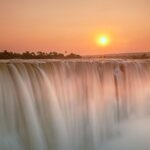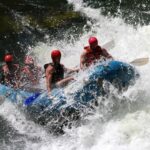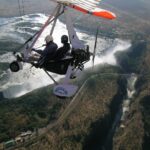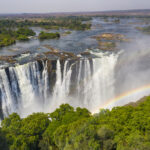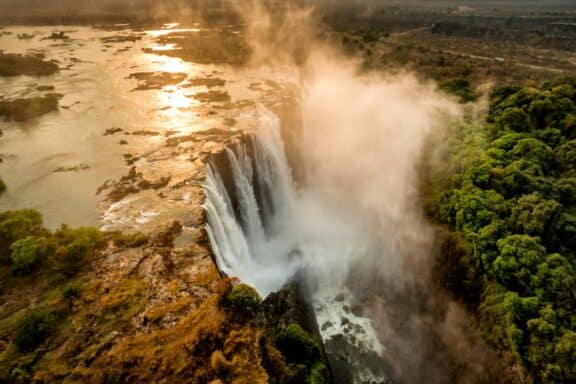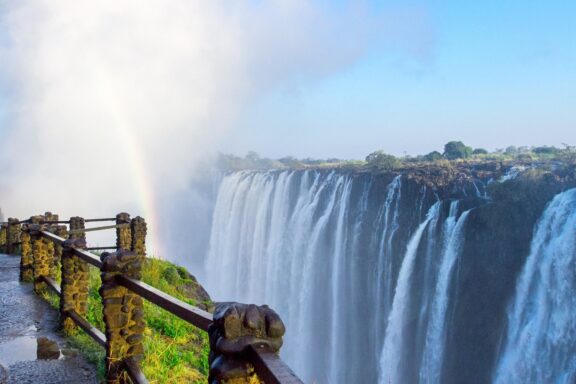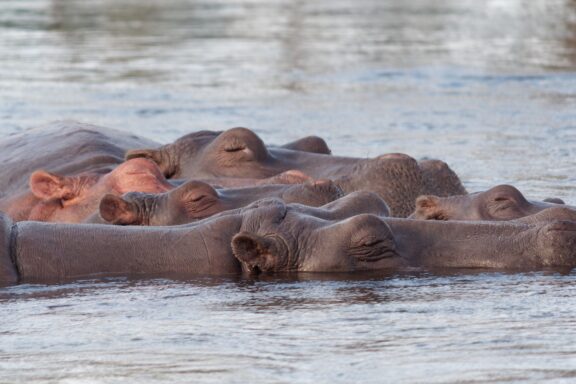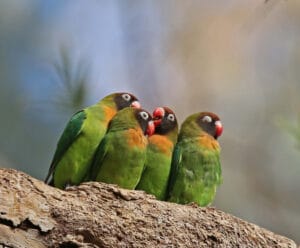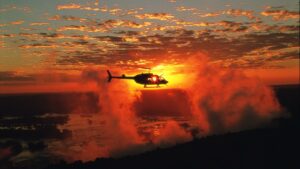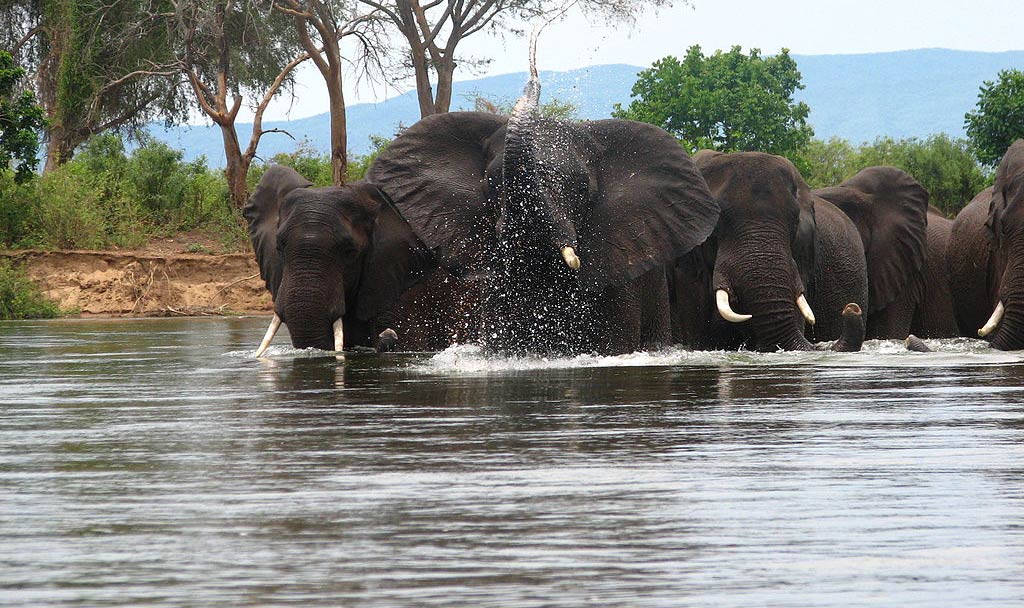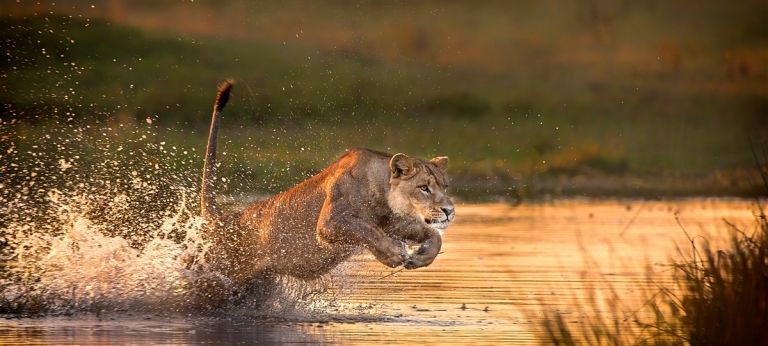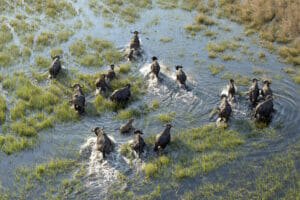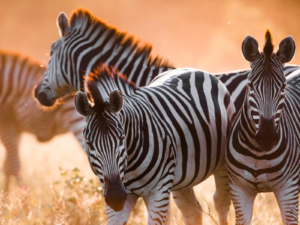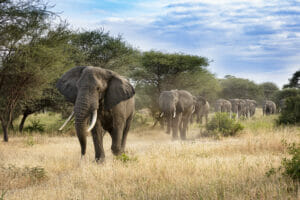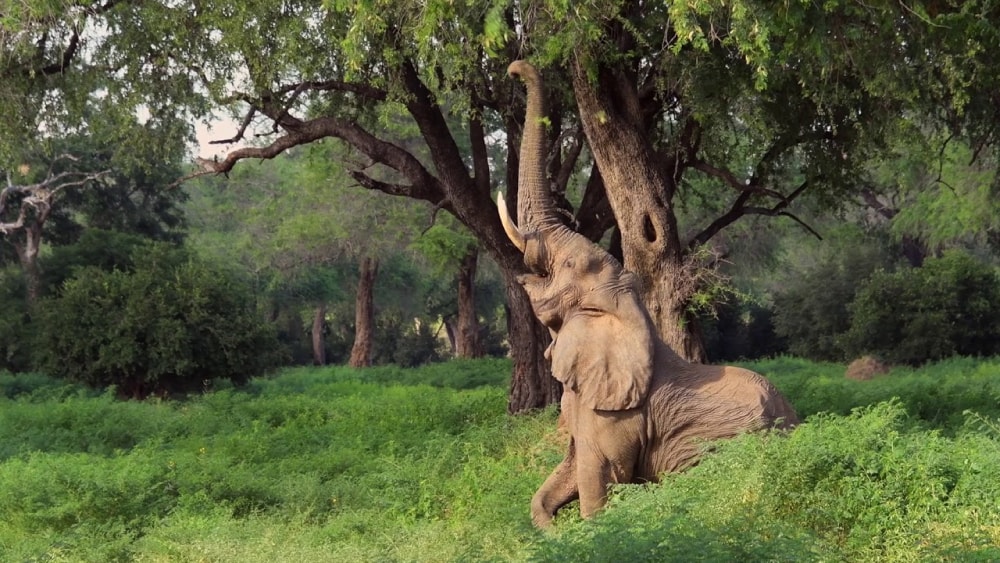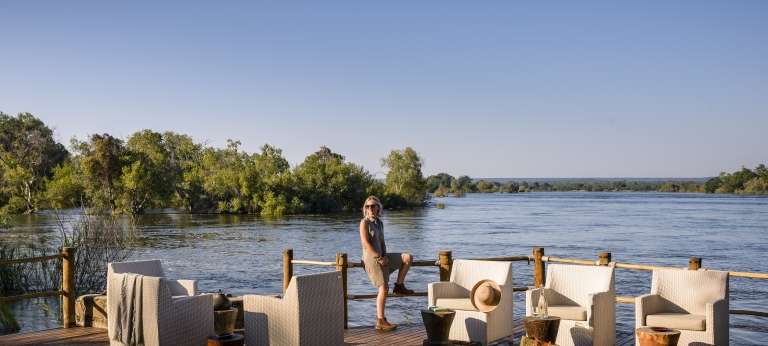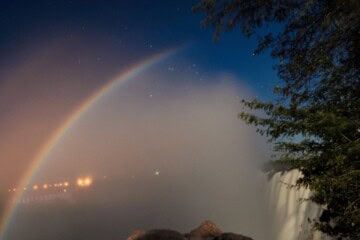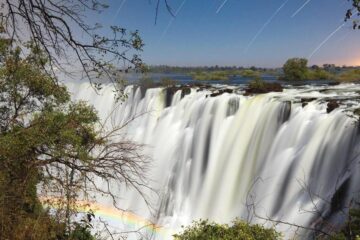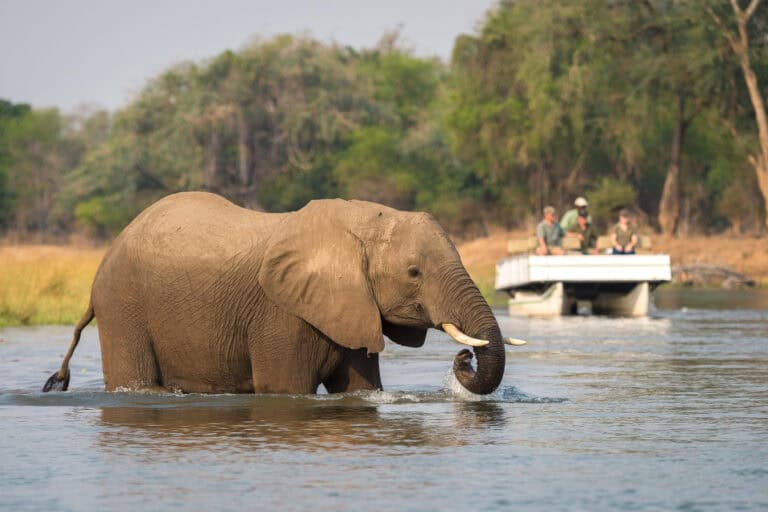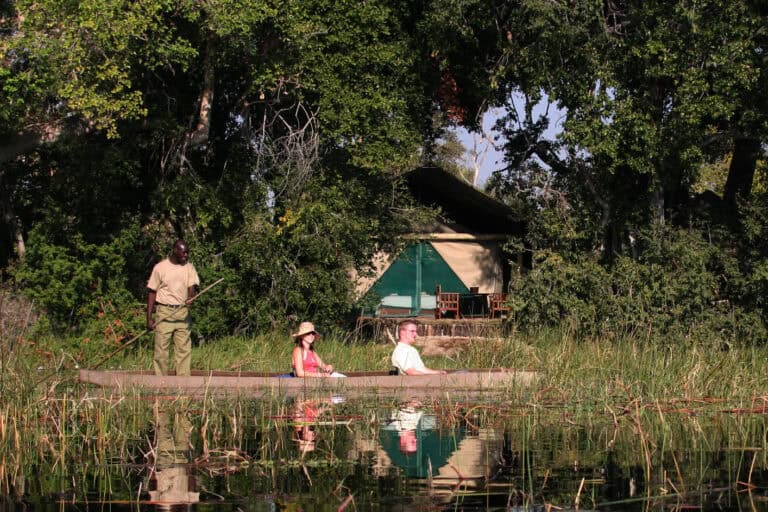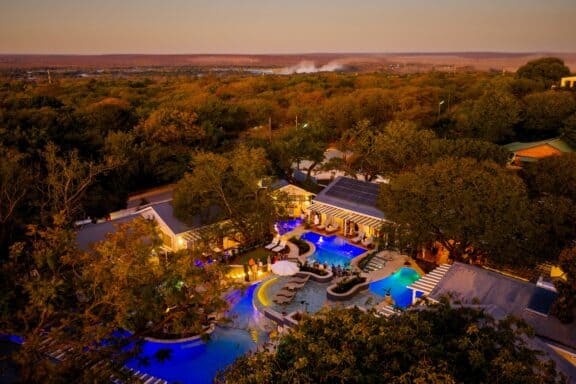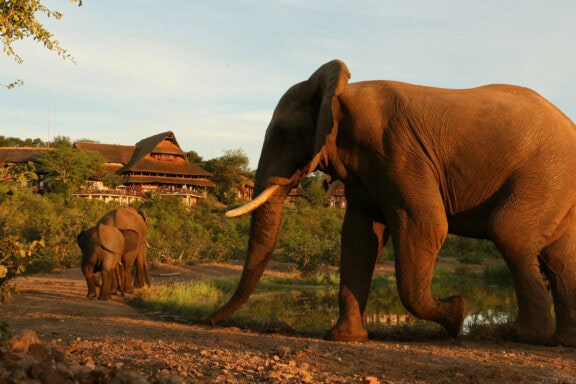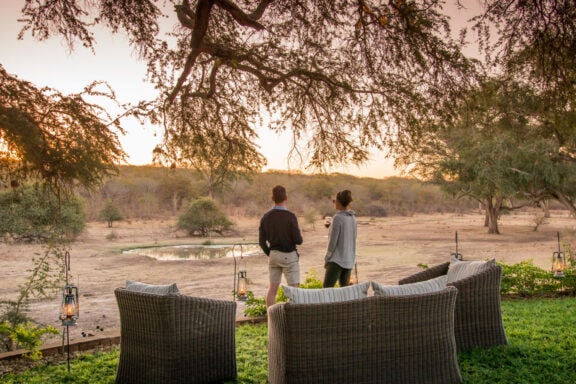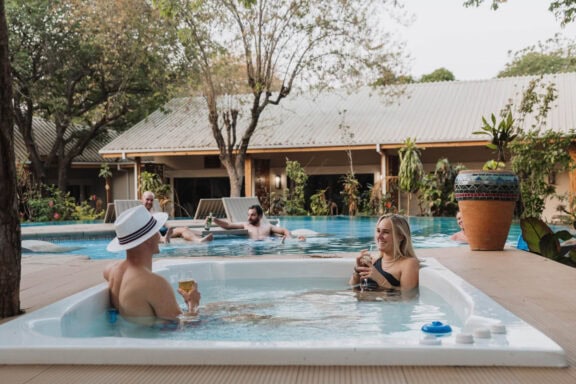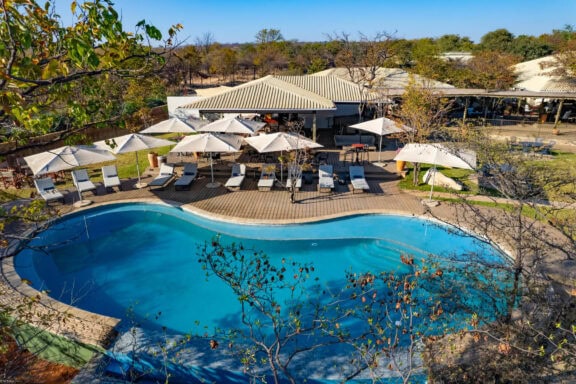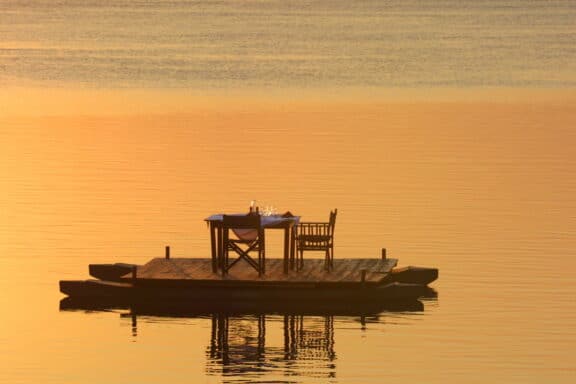The ground vibrates beneath your feet, the roar of cascading water drowning out all else as you stand in the midst of one of the world’s greatest natural wonders. Mosi-oa-Tunya, or “The Smoke That Thunders, is more than just a waterfall; it is a force of nature and an untamed spectacle of power and beauty.
At its widest, the waterfall spans 1,708 m, making it one of the largest waterfalls on the planet. Beyond that, it’s also the centre of a region of incredible biodiversity. Endless water spray feeds a lush rainforest within the surrounding gorges, while nearby Mosi-oa-Tunya National Park and Victoria Falls National Park support numerous species of wildlife.
Watch as the Zambezi River plunges into the gorge below, sending mesmerising plumes of mist skyward and forming rainbows that shimmer in the African sunshine. Whether you’re braving the Devil’s Pool, cruising the river at sunset, or feeling the spray on your skin from the Knife’s Edge Bridge, visiting Victoria Falls is an experience that grips your soul and never lets go.






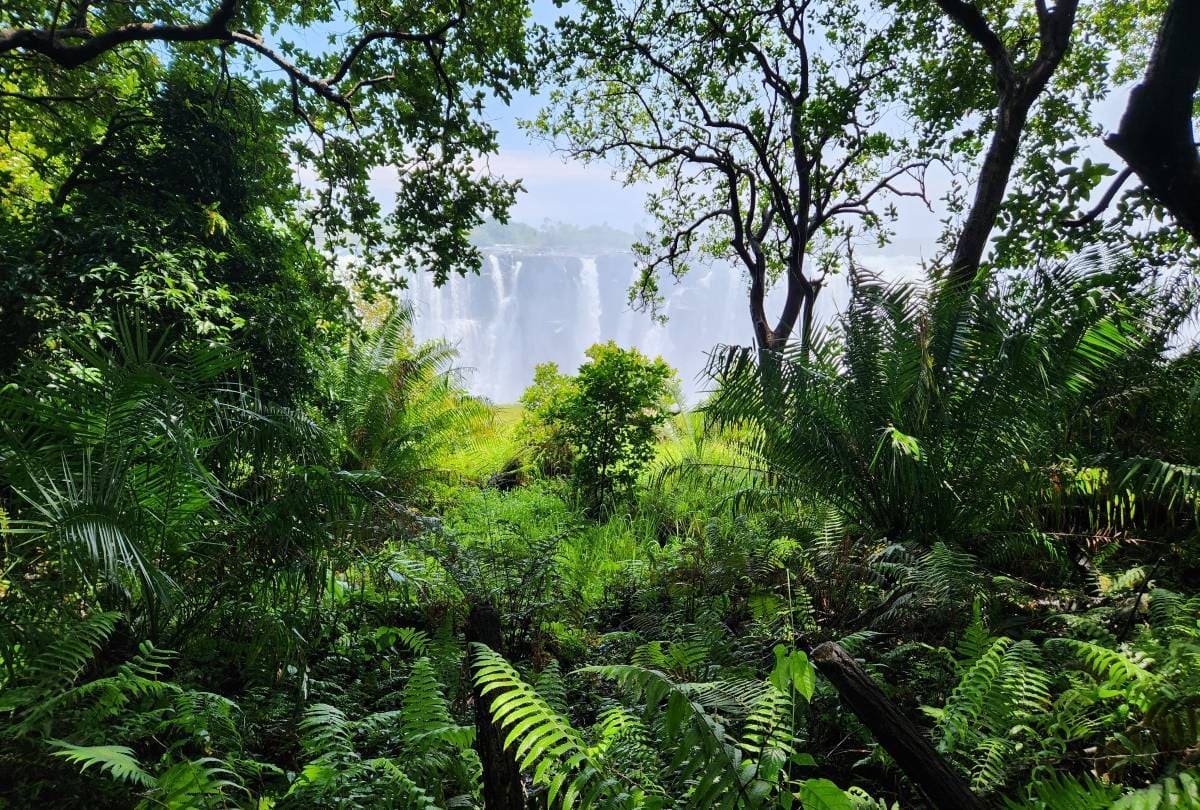



 Copy Link
Copy Link
 Share on LinkedIn
Share on LinkedIn
 Share on Facebook
Share on Facebook
